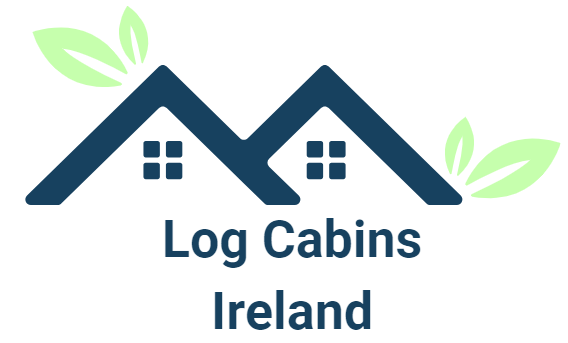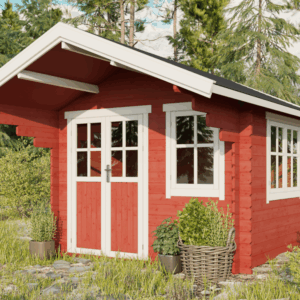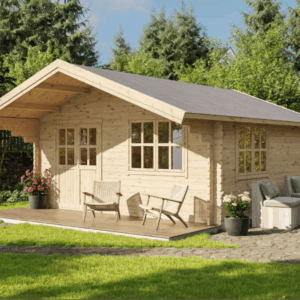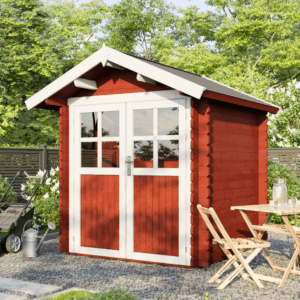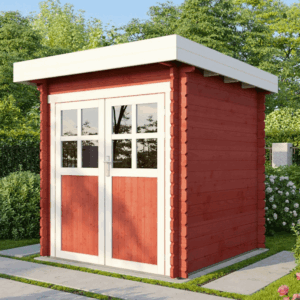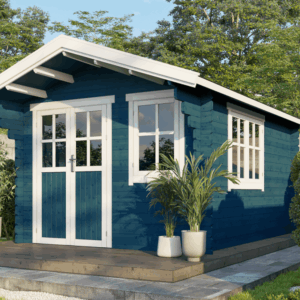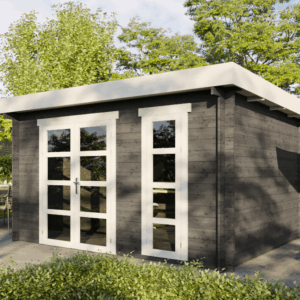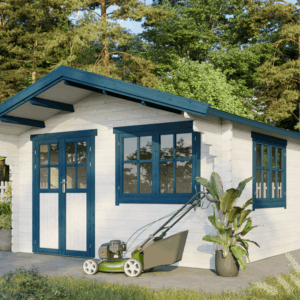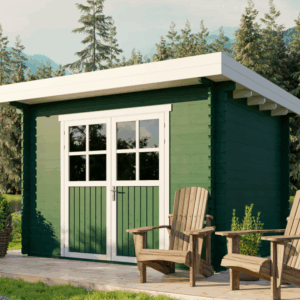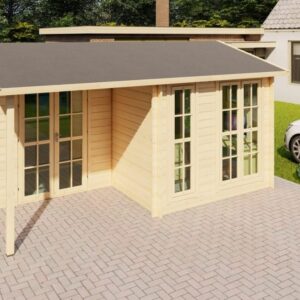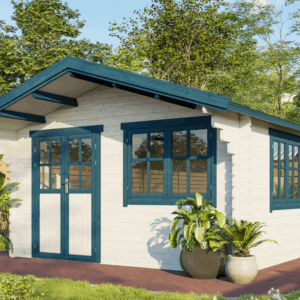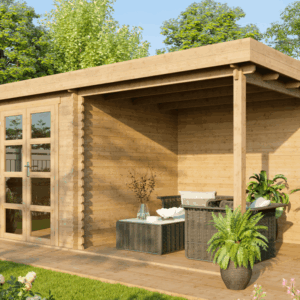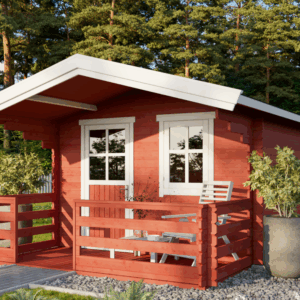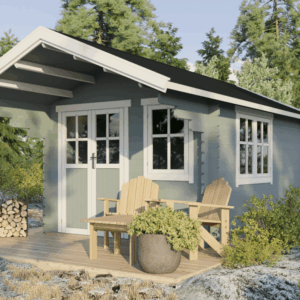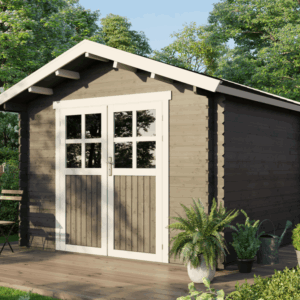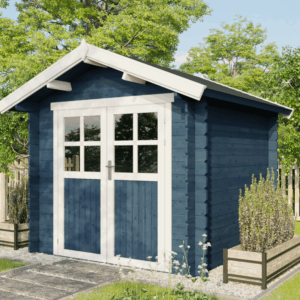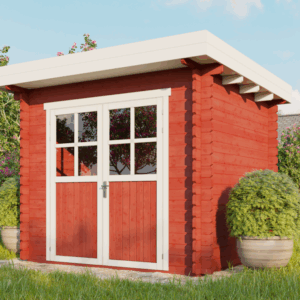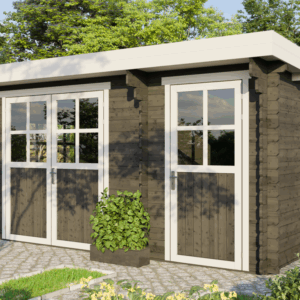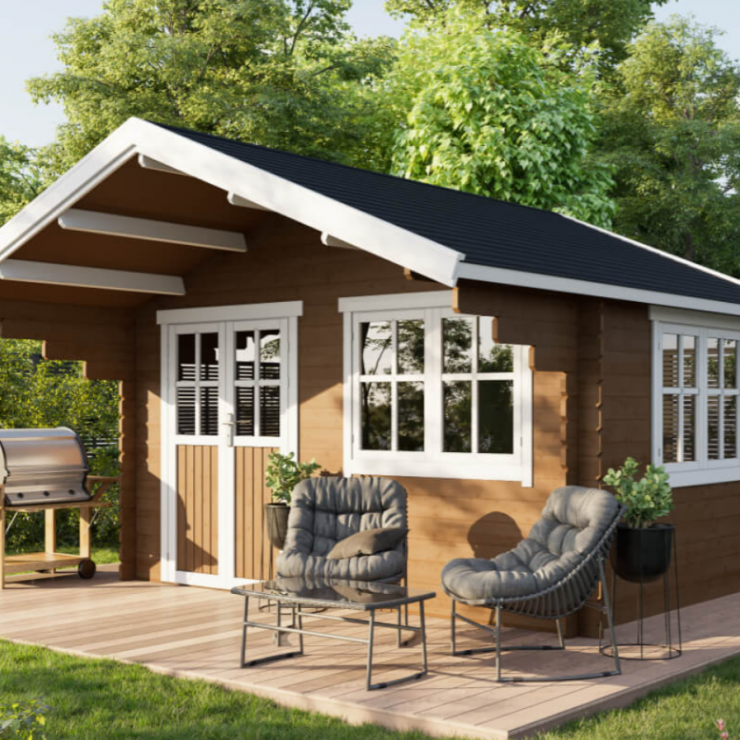The allure of a log cabin, with its rustic charm and connection to nature, is undeniable. For many in Northern Ireland, this dream is within reach, thanks to the increasing popularity and accessibility of log cabin kits. Imagine waking up to the sound of birdsong, surrounded by the serene beauty of the Irish landscape, all from the comfort of your own handcrafted log home. This comprehensive guide will explore everything you need to know about choosing, building, and enjoying a log cabin kit in Northern Ireland, from initial planning to the final finishing touches.
Northern Ireland offers a stunning backdrop for a log cabin, with its rolling hills, picturesque coastlines, and rich history. Whether you envision a cozy weekend retreat, a tranquil holiday rental, or even a permanent residence, a log cabin kit provides a unique and sustainable way to build your dream home. The natural beauty of timber, combined with modern construction techniques, creates a dwelling that is both environmentally friendly and aesthetically pleasing.
Navigating the world of log cabin kits can seem daunting at first, but with the right information, you can confidently embark on this exciting journey. This guide is designed to demystify the process, offering practical advice and insights to help you make informed decisions every step of the way. We’ll cover the benefits of log cabin kits, factors to consider when selecting one, the planning and permitting process specific to Northern Ireland, and tips for a successful build.
Why Choose a Log Cabin Kit for Your Northern Ireland Property?
Log cabin kits offer a compelling solution for those seeking a unique and characterful home. They provide a structured approach to building, with pre-cut logs and detailed plans, simplifying the construction process significantly. This can lead to a more predictable timeline and budget compared to traditional building methods. The inherent thermal properties of timber also contribute to a warm and energy-efficient home, reducing heating costs and environmental impact.
Beyond practicality, the aesthetic appeal of a log cabin is a major draw. The natural grain and texture of the wood create a warm, inviting, and timeless atmosphere. A log cabin can blend seamlessly into the natural surroundings of Northern Ireland, enhancing the beauty of its location. This connection to nature is a key factor for many who choose this style of dwelling, offering a sanctuary from the hustle and bustle of modern life.
Furthermore, log cabin kits often represent a more sustainable building option. Timber is a renewable resource, and responsible sourcing ensures minimal environmental impact. Many kit manufacturers also employ efficient manufacturing processes that reduce waste. This aligns with a growing desire for eco-conscious living and building practices, making log cabins an attractive choice for environmentally aware individuals.
Key Considerations When Buying a Log Cabin Kit in Northern Ireland
Selecting the right log cabin kit is a crucial first step. Several factors should influence your decision, beginning with the intended use of the cabin. Will it be a small garden office, a spacious family home, or a rental property? This will dictate the size, layout, and number of rooms you require. Consider the specific needs of your household or potential guests.
The type of timber used in the kit is another vital consideration. Responsibly sourced, high-quality timber, such as Northern European spruce or pine, is known for its durability and resistance to the elements. Look for kits that specify the grade and treatment of the timber. Understanding the wood’s natural properties, such as its density and resin content, can also offer insights into its longevity and performance.
Finally, research reputable suppliers who specialize in log cabin kits for the UK and Ireland. Read customer reviews, examine past projects, and inquire about their warranty and after-sales support. A good supplier will be knowledgeable, transparent, and willing to answer all your questions, ensuring you feel confident in your purchase and their ability to deliver a quality product.
Understanding the Planning and Permitting Process in Northern Ireland
Embarking on any building project in Northern Ireland requires adherence to planning regulations and building control. For log cabin kits, especially those intended as permanent dwellings, obtaining planning permission is a fundamental requirement. The process can vary depending on the size, location, and intended use of the cabin, so early engagement with your local council’s planning department is essential. They can provide guidance on local policies and requirements.
Building Control approval is also necessary to ensure your log cabin meets structural, fire, and energy efficiency standards. While a log cabin kit comes with pre-designed plans, you may need to engage with a local architect or structural engineer to adapt these plans to meet Northern Ireland’s specific building regulations. This ensures the structure is safe, sound, and compliant with all legal requirements.
It’s also important to consider any site-specific constraints, such as access, drainage, and utilities. Ensure your chosen location can accommodate the necessary services and that you have a clear plan for their installation. Thorough research and communication with the relevant authorities will prevent potential delays and complications throughout the build process.
Types of Log Cabin Kits Available
Log cabin kits come in various styles and construction methods, each offering unique benefits. The most common type is the interlocking log system, where logs are precisely milled with grooves and ridges that fit together, creating a strong and weathertight seal. This is the classic log cabin aesthetic that many people envision.
Another option is the timber frame log cabin. In this design, a traditional timber frame provides the structural support, with log cladding used for the exterior walls. This can offer more design flexibility and potentially faster construction times. Some kits also incorporate modern insulation techniques within the log structure, enhancing energy efficiency further.
When selecting a kit, consider the thickness of the logs. Thicker logs generally offer better insulation properties and a more robust appearance. The profile of the logs also varies, from traditional round logs to more contemporary D-logs or square-edged profiles. Your choice will influence the overall aesthetic and the feel of the finished cabin.
The Log Cabin Kit Building Process: From Foundation to Finish
The construction of a log cabin kit typically begins with the preparation of the site and the pouring of a suitable foundation. This could be a concrete slab, strip foundations, or pier foundations, depending on the ground conditions and the size of the cabin. A solid foundation is critical for the stability and longevity of your log home.
Once the foundation is in place, the log assembly begins. The pre-cut logs are stacked and interlocked according to the manufacturer’s instructions. This process, while often described as straightforward with a kit, requires precision and attention to detail. Many kits include all the necessary fixings, seals, and weatherproofing materials to ensure a secure and airtight structure.
After the main log structure is erected, the roof is installed, followed by windows and doors. Interior finishing, such as insulation (if not integrated into the logs), flooring, plumbing, and electrical work, can then commence. The finishing stages are where your personal touch truly comes to life, transforming the shell into a comfortable and functional living space.
Ensuring Longevity and Low Maintenance for Your Northern Ireland Log Cabin
Maintaining the natural beauty and structural integrity of your log cabin is essential for its longevity. Regular inspection of the logs for any signs of wear, moisture, or insect infestation is crucial. Prompt attention to any issues will prevent them from escalating into more significant problems.
The exterior of your log cabin will require periodic treatments to protect the timber from the elements. This typically involves applying a quality wood preservative and sealant, such as a stain or oil, which will also enhance the aesthetic appeal. The frequency of these treatments will depend on the exposure of your cabin to sun, rain, and wind.
Good ventilation is also key to preventing moisture build-up within the cabin. Ensure that any potential condensation points are addressed and that adequate airflow is maintained. By following these simple maintenance practices, you can ensure your log cabin remains a beautiful and enduring structure for many years to come.
Real-World Log Cabin Kit Success Stories in Northern Ireland
Across Northern Ireland, numerous individuals and families have successfully realized their log cabin dreams. From charming riverside retreats in County Fermanagh to stunning coastal dwellings overlooking the Atlantic, these projects showcase the versatility and appeal of log cabin kits. Many owners have shared their positive experiences, highlighting the satisfaction of building their own unique home.
Consider the story of Sarah and James, who built a two-bedroom log cabin kit as a holiday let near the Giant’s Causeway. They found the kit’s clear instructions and pre-cut components made the build manageable, even with some DIY experience. The cabin has become a popular destination for tourists seeking an authentic Irish experience, generating a steady income.
Another example is the O’Connell family, who opted for a larger log cabin kit as their permanent family home in the Mourne Mountains. They were drawn to the eco-friendly aspects and the natural warmth of a timber dwelling. The finished home has become a cherished sanctuary, offering a peaceful and healthy lifestyle surrounded by breathtaking scenery.
The Future of Log Cabin Living in Northern Ireland
The trend towards sustainable and nature-connected living is set to continue, making log cabin kits an increasingly relevant choice for homeowners in Northern Ireland. As technology advances, so too do the design and construction methods of log cabin kits, offering even greater efficiency and customization options.
The growing awareness of the environmental benefits of timber construction, coupled with the desire for unique and characterful homes, positions log cabins as a compelling option for the future. With careful planning and the selection of a reputable supplier, a log cabin kit can be the perfect way to create your dream home amidst the stunning landscapes of Northern Ireland.
Whether you dream of a cozy hideaway or a spacious family residence, the journey to owning a log cabin in Northern Ireland is an exciting one. By understanding the process, the considerations, and the benefits, you can confidently take the first steps towards building your own piece of rustic paradise. The enduring appeal of log cabins, combined with modern kit solutions, offers a pathway to a unique and fulfilling living experience.
“`
Looking for services in Causeway? You may also like: Flower Delivery 24.
